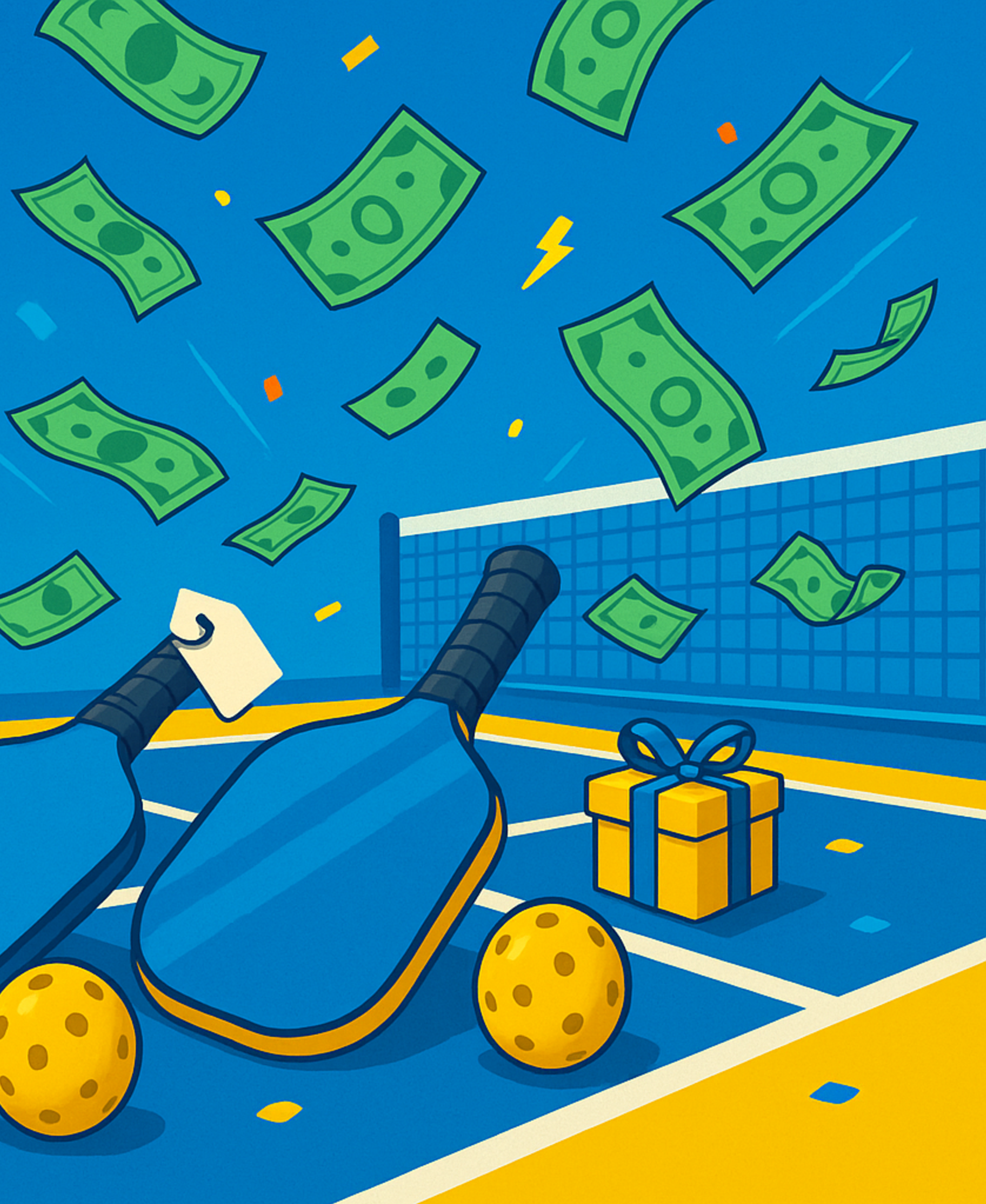- PICKLEBACKCLUB
- Posts
- Power or Reach? You Can Have Both.
Power or Reach? You Can Have Both.
Mastering the modern pickleball backhand starts here.
PICKLEBACKCLUB
Join over 4 million Americans who start their day with 1440 – your daily digest for unbiased, fact-centric news. From politics to sports, we cover it all by analyzing over 100 sources. Our concise, 5-minute read lands in your inbox each morning at no cost. Experience news without the noise; let 1440 help you make up your own mind. Sign up now and invite your friends and family to be part of the informed.
Hey Picklebackers! 🏓✨
Your backhand can be your biggest weapon on the court — if you know how to use it. Whether you favor the classic one-hander or the modern two-hander, each stroke brings its own strengths. In this edition, we’re breaking down when to use each so you can add more variety, confidence, and control to your game.
🏓 When to Use a One-Handed vs. Two-Handed Backhand in Pickleball
One of the most debated topics in pickleball technique is whether to use a one-handed or two-handed backhand. Both strokes can be highly effective — it all depends on your playing style, positioning, and the type of shot you’re trying to execute. Understanding when to use each, and knowing the pros and cons of both, can help you add consistency, variety, and confidence to your backhand game.
🎾 The One-Handed Backhand
The one-handed backhand is the traditional shot most players start with in pickleball. It uses a single arm to guide and generate force through the paddle. While it might not pack the same power as a two-handed stroke, it offers excellent reach and finesse.
✅ Pros of the One-Handed Backhand
Greater Reach:
Using one hand naturally extends your range. This extra reach can make a huge difference when you’re stretched out for a wide dink, defending against a lob, or reacting quickly in fast kitchen exchanges.Superior Touch and Feel:
The one-hander allows for subtle paddle control, making it ideal for dinks, drop shots, and resets. Because your wrist and forearm have more freedom, you can create soft angles or add slice to keep the ball low.Quick Transitions at the Net:
In fast hands battles, being able to switch from forehand to backhand quickly can be the difference between winning and losing a point. The one-handed grip allows you to react instinctively without repositioning your second hand.Easier for Slice and Spin:
Players who like to disguise their shots or use variety benefit from the one-hander’s ability to generate spin. You can easily undercut or sidespin a backhand to throw off your opponent’s rhythm.
❌ Cons of the One-Handed Backhand
Less Power:
Because you’re using only one arm, it’s harder to generate the same pace or depth you’d get with a two-handed stroke. This can make deep baseline rallies more challenging.Tougher Against Heavy Pace:
When your opponent hits with speed or topspin, it’s more difficult to control the ball with a single hand. Off-balance or late shots often sail high or short.Requires Strong Technique:
The one-handed backhand demands good timing, body rotation, and wrist stability. Beginners often find it difficult to keep the paddle square through contact.
💪 The Two-Handed Backhand
The two-handed backhand has become increasingly popular in modern pickleball, especially among players coming from tennis. By adding the second hand, you gain more power and control — which can be especially useful against fast or heavy hitters.
✅ Pros of the Two-Handed Backhand
Increased Power and Stability:
With both hands working together, you can drive through the ball more forcefully. This makes your backhand drives, returns, and passing shots more consistent and penetrating.More Control on High Balls:
Shoulder-height backhands can be awkward with one hand, but the extra stability from your top hand makes them far more manageable. This is especially valuable when returning serves or defending from midcourt.Easier for New Players:
The two-handed motion feels more natural for many, particularly those with tennis or baseball backgrounds. It’s easier to control your paddle face and maintain clean contact.Better in Windy or Fast Conditions:
The second hand provides extra stability when conditions are unpredictable or when you’re handling high-speed shots. It helps anchor your paddle and reduce mishits.
❌ Cons of the Two-Handed Backhand
Reduced Reach:
Because both hands are on the paddle, your range is limited. You may struggle to reach wide balls or react quickly to fast dinks at the kitchen line.Less Flexibility at the Net:
Quick volley exchanges require small, precise movements. The two-handed grip can feel restrictive and make it harder to adjust your paddle angle.More Awkward on Low or Wide Balls:
When a ball dips below knee height, bending and swinging with two hands can feel uncomfortable and limit your follow-through.Slightly Slower Transitions:
Moving between forehand and backhand takes an extra beat since you need to regrip with both hands. That tiny delay can matter in rapid-fire exchanges.
🧭 When to Use Each
The best players know when to use each version depending on the situation.
Use a two-handed backhand when you’re returning serve, hitting drives from midcourt, or attacking with pace. The extra power and control give you confidence to drive the ball deep.
Use a one-handed backhand when you’re dinking, volleying, or defending wide shots. The added reach and finesse make it easier to control soft touch play and handle stretch situations.
Many advanced players actually blend both styles — hitting two-handed backhands on drives and switching to one hand for finesse shots and volleys. This hybrid approach maximizes versatility and ensures you’re never caught off balance.
@nicholaswade_pb 1 Handed Vs 2 Handed Backhand 🤔 Which is better? Let me know ⬇️ 1 Hand = More power/reach 2 Hand = More control/consistency/range of pace ... See more
🎯 The Bottom Line
There’s no one-size-fits-all backhand in pickleball. The one-handed backhand offers reach, touch, and fluidity, while the two-handed version provides power, stability, and confidence under pressure. The key is to experiment, practice both, and learn which suits each game situation. The more tools you have in your backhand arsenal, the more unpredictable and effective you’ll be on the court.
The best players don’t pick one backhand — they learn both and use them wisely. Add variety to your toolbox, practice your transitions, and watch how your confidence (and win rate) grows.
This week, challenge yourself to hit five minutes of one-handed dinks and five minutes of two-handed drives in practice. Your future self at the kitchen line will thank you.
Dill-lighfully yours,
Your PICKLEBACKCLUB Team 🥒🎾




